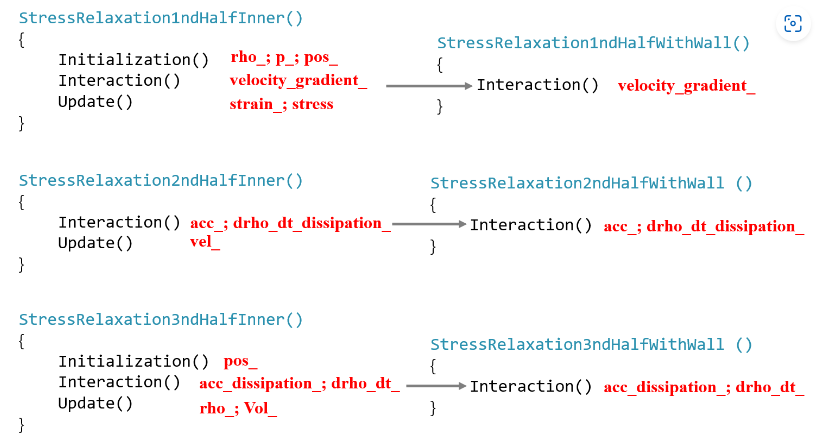Since some new PRs are merged, there are some conflicts.
I solved the conflicts based on the latest master version. I also simplified the code (delete many unnecessary code blocks and comments) and improved the code quality.
Most of the comments from #475 are considered in this version, except the following two points:
(1) I still use three step relaxations. I try your comments from #475. Combining any of the two processes will change the order of updating the variables and the affect the results.
As you can see here, we have three different particle dynamics (the interaction in each step), and some variables are updated between each two particle dynamics. I tried and found the current sequence gives the best result compared with experimental data and other people's numerical results.
(2) I still keep the template class for Riemann solver. Although I just need acoustic Riemann solver for the uploaded two cases, I may need different Riemann solvers in the following studies.
I am wondering why there is no way to put the computation of velocity gradient behind density change rate. It seems quite easy by combining computing velocity gradient and density change together and update strain by two steps as the density, and then update stress for momentum equation. It is the same as other solid dynamics updating and should be equivalent to the present version.

Since some new PRs are merged, there are some conflicts.
I solved the conflicts based on the latest master version. I also simplified the code (delete many unnecessary code blocks and comments) and improved the code quality.
Most of the comments from #475 are considered in this version, except the following two points:
(1) I still use three step relaxations. I try your comments from #475. Combining any of the two processes will change the order of updating the variables and the affect the results.
As you can see here, we have three different particle dynamics (the interaction in each step), and some variables are updated between each two particle dynamics. I tried and found the current sequence gives the best result compared with experimental data and other people's numerical results.
(2) I still keep the template class for Riemann solver. Although I just need acoustic Riemann solver for the uploaded two cases, I may need different Riemann solvers in the following studies.